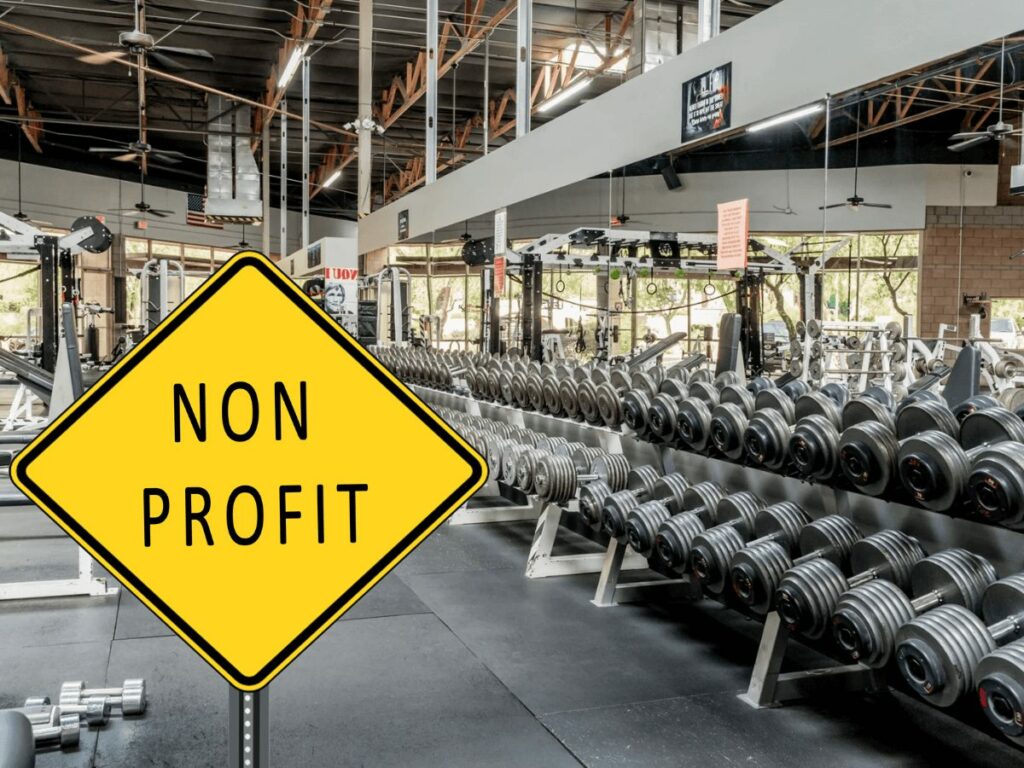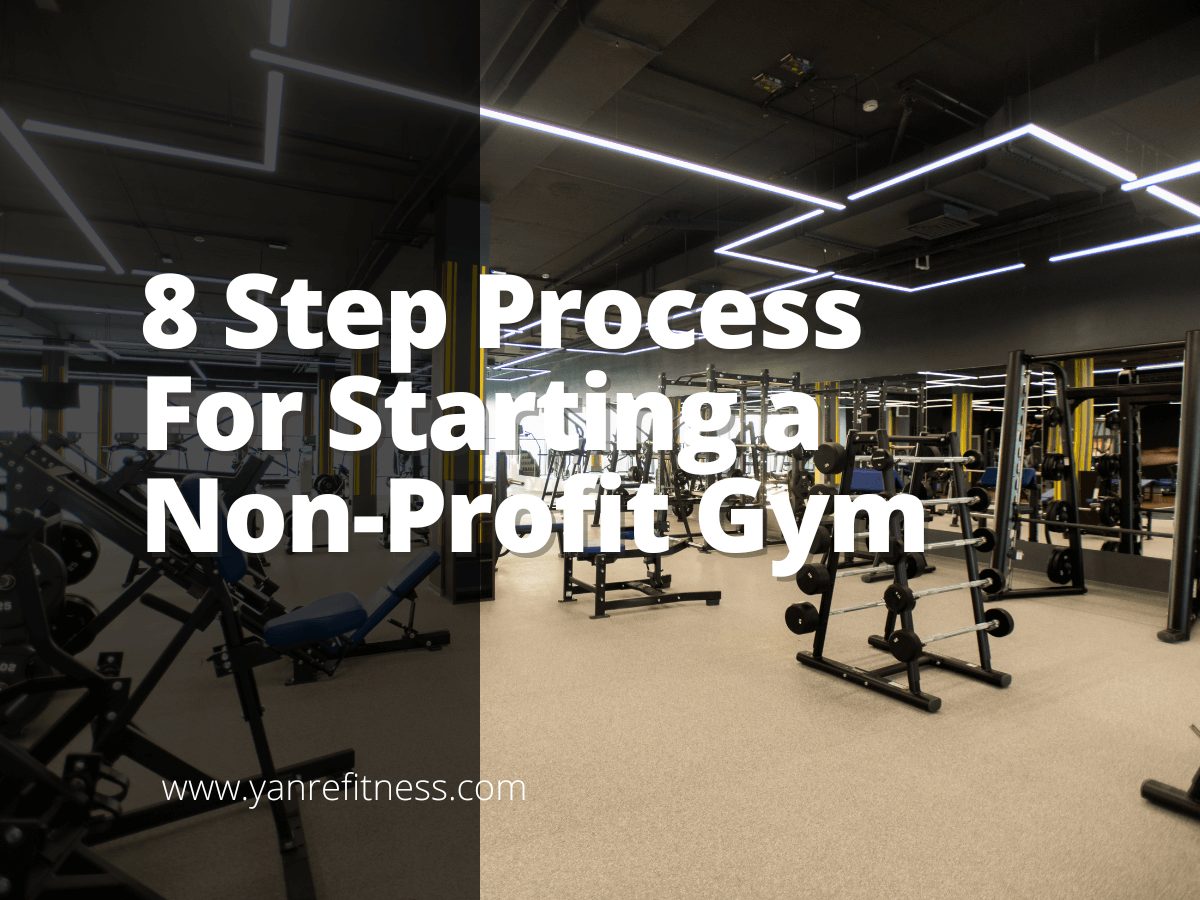Want to make wellness accessible while uplifting your community? Starting a non-profit gym sounds like a brilliant idea, but figuring out the initial steps can be daunting.
Don’t worry! The solution is an 8-step blueprint that includes pinpointing community needs, ensuring compliance, and devising fundraising strategies. This not only streamlines the process but also unlocks benefits like tax exemptions and community backing. Dive in as we uncover the ultimate guide to kick-starting your non-profit gym journey.
Read on to explore funding options, including fitness equipment grants, to support your fitness business!
Table of Contents
1. Initial Planning Phase
Initiating a non-profit gym demands a clear vision and an understanding of the community it will serve. Laying a solid foundation through diligent research and feasibility studies is imperative. Such a beginning paves the way for aligning the gym’s objectives with community needs. Here are some vital aspects to remember:

Mission and Vision
It’s crucial to determine the mission and vision of the non-profit gym. The mission reflects the gym’s purpose, while the vision is an aspiration of what the organization wants to achieve in the long term. I observed that a clear mission and vision often resonate with potential members and donors, effectively guiding the gym toward success.
Target Community
Understanding the community to be served by the non-profit gym is essential. By analyzing the demographics, preferences, and needs of the target population, one can design services and programs that address specific community requirements. For instance, a gym I admired in Chicago focused on serving low-income families, which turned out to be very impactful.

Feasibility Study
A feasibility study evaluates the viability of the gym by examining various factors such as market demand, competition, and resources. This study helps in making informed decisions. Conducting a feasibility study was one of the crucial factors behind the success of my gym.
2. Building a Solid Business Plan
A well-structured business plan acts as a roadmap for the non-profit gym, guiding it through various phases. It encompasses defining goals, budget allocation, and outlining key components essential for the gym’s success. Such a plan proves invaluable for keeping the business on track while ensuring financial sustainability. Here are some points to take note of:
Business Plan Importance
A well-structured business plan is indispensable for laying down the foundation of a non-profit gym. It not only assists in organizing ideas but also helps in securing funding and partnerships. One of my peers in the industry successfully attracted substantial funding through an impressive business plan.
Key Components of a Non-Profit Gym
A comprehensive business plan should encompass an executive summary, a description of the gym, a market analysis, organizational structure, services offered, marketing strategies, and a financial plan. I believe it’s essential to include how the gym will acquire quality equipment from renowned brands like Yanre Fitness.
Budget and Finances
Establishing a budget is vital for keeping finances in check. Forecasting expenses and planning for sources of income ensures sustainability. Having a solid budget has been key to maintaining operations even in times of uncertainty.

3. Fundraising and Financial Management
For a non-profit gym, fundraising is a lifeline. Exploring diverse fundraising avenues and grants enables the mobilization of funds necessary for launching and maintaining the gym. Concurrently, adept financial management is crucial for resource allocation, ensuring transparency, and accountability. Here’s what you should remember:
Methods of Fundraising
Fundraising can be achieved through various means, such as grants, donations, sponsorship, and crowdfunding. For instance, a gym in California I know raised funds by hosting a community fitness challenge, while another partnered with other known companies for corporate sponsorship.
Grant Opportunities
Grants are non-repayable funds provided by governments, corporations, or foundations. Securing grants requires a compelling proposal that showcases the gym’s objectives and potential impact. Look for a company or business, for example, that is known to support community initiatives.
Managing Finances
Effective financial management involves the proper allocation of funds, bookkeeping, and financial reporting. From my point of view, it’s crucial for maintaining the trust of stakeholders and ensuring the gym’s long-term viability.
The table below provides insights into the key aspects of managing finances in a gym, including proper fund allocation, accurate bookkeeping, financial reporting, budgeting, cash flow management, and compliance with regulations. Discover how effective financial management contributes to the gym’s long-term viability, stakeholder trust, and sustainable growth, ensuring financial stability and success in the fitness industry.
| Managing Finances | Description |
| Proper Fund Allocation | Effective financial management involves allocating funds wisely, ensuring that expenses are allocated to the appropriate areas such as equipment purchases, facility maintenance, staff salaries, marketing efforts, and other operational costs. This ensures financial resources are utilized efficiently and effectively. |
| Accurate Bookkeeping | Maintaining accurate bookkeeping records is essential for tracking income, expenses, and financial transactions. By keeping detailed and organized financial records, gym owners can gain insights into the financial health of the business, make informed decisions, and comply with legal and regulatory requirements. |
| Financial Reporting and Transparency | Regular financial reporting provides stakeholders, including owners, investors, and lenders, with a clear overview of the gym’s financial performance. Transparent financial reporting builds trust and confidence in the gym’s operations, showcasing financial stability, profitability, and adherence to financial goals. |
| Budgeting and Expense Management | Creating a comprehensive budget and monitoring expenses helps in managing costs effectively. By setting financial targets, tracking expenses, and making informed decisions, gym owners can control expenditures, identify areas for improvement, and ensure the gym operates within its financial means. |
| Cash Flow Management and Forecasting | Proper cash flow management involves monitoring incoming and outgoing funds to maintain a healthy cash flow. Forecasting future cash flow helps gym owners anticipate financial needs, plan for contingencies, and make strategic financial decisions to sustain operations, investments, and growth. |
| Financial Planning for Long-Term Viability | Strategic financial planning is crucial for ensuring the long-term viability of the gym. By setting financial goals, developing growth strategies, and conducting financial analysis, gym owners can position the business for sustainable growth, identify opportunities for expansion, and mitigate financial risks. |
| Compliance with Financial Regulations | Adhering to financial regulations, tax obligations, and accounting standards is vital for maintaining legal and financial compliance. Gym owners should stay updated on relevant financial laws and regulations to avoid penalties, legal issues, and reputational damage. |
| Stakeholder Trust and Viability | Effective financial management builds trust among stakeholders, including investors, lenders, and members. Demonstrating sound financial practices and transparency enhances the gym’s credibility, ensuring long-term viability, and fostering positive relationships with stakeholders. |
4. Legalities and Compliance
Navigating the legal landscape is vital for any non-profit gym. From registration of the organization to acquiring the necessary permits and licenses, it’s critical to be compliant with local, state, and federal regulations. This adherence not only legitimizes the operations but also instills trust among stakeholders. Let’s dig more into these significant points below:
Registering Your Non-Profit Organization
To start a non-profit gym, one must first register the organization as a non-profit entity. This typically involves applying for 501(c)(3) status in the US, which grants the organization tax-exempt status. It’s critical to file the necessary paperwork accurately and comply with the regulations set by the IRS. I remember the sense of accomplishment when I received the 501(c)(3) confirmation letter. It’s worth the effort!
Permits and Licenses
Once registered as a non-profit, the next step is to obtain the necessary permits and licenses. These usually include a general business license, building permits, and health and safety permits. Be sure to check local and state requirements as these can vary. It’s better to be safe than sorry – nobody wants a surprise inspection shutting things down.

Compliance
Staying compliant is key to the longevity of the non-profit gym. This involves adhering to local zoning laws, state regulations, and federal laws. Regularly reviewing these regulations ensures that the gym operates within the legal framework.
5. Setting Up the Gym
Choosing an accessible location, procuring equipment, and assembling a skilled team are essential steps in setting up a non-profit gym. A strategic approach to these elements ensures that the gym is well-equipped to serve the community effectively and efficiently. Let’s explore the following details below:
Location Selection
The gym’s location can be a game-changer. It is imperative to select an area that is accessible to the target community and compliant with zoning laws. A thorough market analysis can help in making an informed decision. When I found the perfect location for my gym, I knew it was meant to be.
Purchasing Equipment
After securing a location, the next phase is procuring gym equipment, check out Yanre Fitness’s quality gym equipment. It’s important to prioritize quality and variety to cater to different fitness needs. Consider both brand-new and refurbished equipment to manage costs. The community still appreciates the diverse range of equipment available.
Staff and Volunteers
A gym is as good as its staff. Hiring qualified trainers and support staff is essential. Additionally, recruiting volunteers can help in managing the operations and costs. Be sure to provide them with the necessary training. I believe in the saying, “Your staff is your brand,” and it has proven true.

6. Marketing and Outreach
Establishing a presence in the community through marketing and outreach programs is vital for a non-profit gym. Leveraging digital strategies and collaborating with local entities can foster awareness and engagement. Such efforts contribute to building a rapport with the community and attracting potential members. Here are some key points to keep in mind:
Community Outreach
Engaging with the community is integral to the success of a non-profit gym. This involves conducting workshops, seminars, and fitness campaigns to create awareness. A strong presence in the community helps in gaining trust and building relationships. Seeing a gym make a difference in people’s lives has been one of the most fulfilling experiences.
Digital Marketing Strategies
In today’s digital world, having an online presence is vital. This can be achieved through a website, social media, and other digital marketing strategies. Online platforms can be used for promotions, registrations, and feedback. Online marketing has been a game-changer for any gym, bringing in new faces every week.
Collaborations
I have seen collaboration as a powerful tool. By partnering with local businesses and organizations, a non-profit gym can leverage additional resources and widen its reach. This also creates opportunities for sponsorships and donations.
7. Launching and Operations
A successful launch sets the tone for a non-profit gym’s journey. Implementing grand opening strategies, streamlining day-to-day operations, and offering diverse programs and services is pivotal. A focused approach to these facets ensures the gym functions smoothly while fulfilling its mission. Here are some to take note of:
Grand opening
Grand opening strategies for non-profit gyms should focus on building community engagement and awareness. Holding an open house where community members can tour the gym and understand the services offered is effective. It’s also important to collaborate with local businesses and stakeholders for support. My friend’s non-profit gym’s opening was a blast, thanks to the neighborhood’s enthusiasm.
Daily Operations
For daily operations, it’s essential to maintain a well-trained staff that believes in the non-profit’s mission. The gym should ensure cleanliness, proper equipment maintenance, and customer satisfaction. Building a schedule for programs and activities that caters to different age groups is vital. Using management software can help streamline tasks. I’ve found that a happy staff leads to a happy community at the gym.
Programs and Services
Implementing programs and services requires a deep understanding of the community’s needs. Offering classes such as yoga, personal training, or the ultimate guide for personal trainers, or after-school programs for kids is recommended. It’s also important to offer scholarships or reduced fees for low-income families. Having feedback systems in place helps to evolve and improve services. See the ff. below:

- Trial Week Passes
Offering newcomers a 7-day gym pass is an essential service that non-profit gyms should consider. This opportunity allows potential members to experience the gym’s culture, customer service, and equipment before committing. Such trial passes are a tried-and-true marketing idea that can boost sign-ups and foster a sense of inclusivity.
- Fitness Challenges
Fitness is the heart of any gym, and organizing a six-week challenge is an exciting way to engage members. These challenges can be tailored to different fitness levels and goals, making them inclusive for all. Hosting these challenges in January or during the summer is optimal, as individuals are often looking to embark on their fitness journeys during these times.
- Personal Training Sessions
One-on-one personal training sessions can be invaluable for newcomers who might feel overwhelmed or uncertain about how to begin. By offering a complimentary personal training session for new members, non-profit gyms can ensure that these individuals become more comfortable and informed about the equipment and environment, which can lead to long-term membership.
- Volunteering Programs
Volunteers can be a lifeline for non-profit gyms. A volunteer recruitment program can not only bring in additional help but also create a more connected community. Engaging volunteers in various aspects of gym operations, from maintenance to organizing events, can not only help in running the gym smoothly but also instills a sense of ownership and community among the members.
- Health and Wellness Workshops
Offering health and wellness workshops can be an effective way to educate members and the community about the importance of a balanced lifestyle. Topics can range from nutrition to mental health, and offering these workshops can position the non-profit gym as a holistic health and wellness hub. Such workshops can also foster partnerships with local health professionals and businesses.
8. Evaluating Success and Future Planning
Utilizing Key Performance Indicators (KPIs) and conducting regular audits allows for gauging the gym’s performance when opening a gym. This, in turn, aids in future planning and scaling, ensuring the gym’s growth aligns with its vision and the community’s evolving needs. Here are some to explore:
Key Performance Indicators (KPIs)
KPIs for non-profit gyms include membership growth rate, member retention, program participation, and community engagement. Monitoring these KPIs provides insights into what’s working and what isn’t. It’s also essential to track fundraising and revenue generation to ensure financial sustainability. I always say, “Numbers speak louder than words,” when it comes to our KPIs.
Audit and Assessments
Regular financial auditing is necessary for non-profit organizations to ensure transparency and accountability. Also, assessing the effectiveness of programs and services through surveys and feedback from the community helps in making informed decisions. Utilizing software tools can help in conducting these audits and assessments efficiently. Our trusty auditing tools are like the trusty dumbbells in our gym – essential!
Future planning
Future planning involves setting long-term goals and strategizing on scaling operations. This might include opening new branches, introducing new services, or launching community outreach programs. Engaging the board of directors in future planning is critical as they provide governance and guidance. Collaborating with other non-profits can also open new avenues for growth.
Conclusion
We’ve explored the empowering journey of establishing a non-profit gym and how it can be a catalyst for positive change in communities by offering affordable fitness alternatives. The guide covered essentials like understanding non-profit structures, highlighting the benefits for communities, and the steps involved in building such an invaluable enterprise.
For any enterprises with queries or looking to participate don hesitate to connect with us. Moreover, enterprises in search of quality fitness equipment should consider Yanre Fitness, a reputable fitness equipment center that meets a variety of fitness requirements. Together, let’s pave the way for healthier, robust communities! Contact us now!
Related articles:








